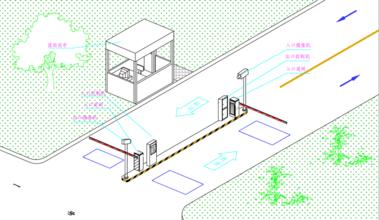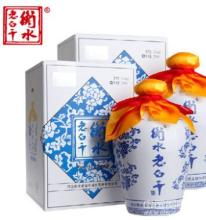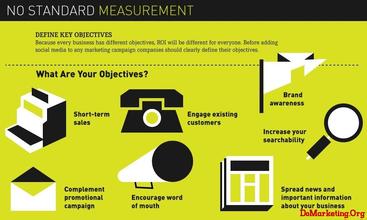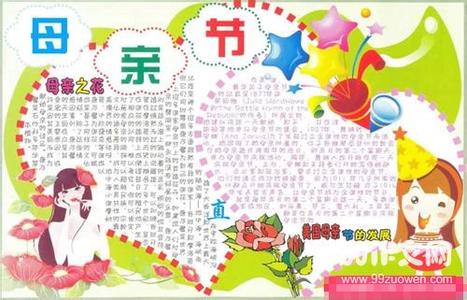教学目标
一、Teaching Aims
本单元为复习课,重点复习1至5单元出现的语法现象和日常交际用语。同时通过对话课的学习与操练,进一步熟悉有关打电话的用语,通过对两篇文章的学习,了解一些有关集邮,集硬币方面的知识,学生能够对硬币的历史,发展和收藏进行介绍。
二、Teaching important and difficult points
1.Words and phrases
shape, ring, collection, bank, material, hide, (hid, hidden), envelope, cheaply, cock, shame coin, silver, penny, (pi. pence) , mine, possibly, whenever, whatever, afford, hand out, here and there, look round, sooner or later, pick up, packs of, kind of…, at the beginning, be mixed with
2.Daily expressions
Hello. Can I speak to Zhou Lan, please?
This is Zhou Lan speaking.
But I’ve only just got home.
I would like to ask you about some stamps.
What a pity! What a shame!
I’ll ring you if I have any news.
It’s a pity I didn’t think of it earlier.
3.Grammar
Revise grammar from unit one to unit five.
教学建议
对话课建议:
在Lesson 21 有关打电话的对话练习,教师引导学生以口头练习为主,让学生在对话交际功能学会打电话的用语。教师可设置情景对话让学生们进行操练,比如说:教师让两个学生们到前表演,话题为谈论借英语学习杂志或其它使用学生们感兴的题目,教师给学生在黑板上写一些电话用语的日常用语如:Can/May I speak …..? This is ….speaking? Is that..? so on教师在这里只充当配角。
课文建议
教师在Lesson22中,让学生分小组学习本文章,复述课文,分小组讨论集邮的好处。教师与学生们共同参与完成本课的学习内容。教师尽力给学生们多提供有关本课内容的信息和图片。
听力建议
1.首先,教师对学生讲今天要学习的是收集硬币的知识,教师介绍在这段对话中共有五个人,他们都有不寻常的硬币。
2.教师让学生们阅读每一个练习的问题,弄清楚学生们在听的过程中应抓住哪些重点,然后教师在播放磁带,以泛听和精听为过程,最后教师检查学生做练习的情况。
教材分析
本单元是一个复习课,本文的对话是以打电话为主,练习打电话用语,语句比较简单,两篇阅读课是有关于收集硬币集邮的介绍,文中用一些数字表明硬币的发展过程,同时也学习提供一些集邮的建议,在23课中语法主要是复习1至5单元所学的知识点及词性的转换。
重点难点
辨析:pack与parcel,packet
这三个词都指包。
pack多指较小的包,与package可以互换;学生用的背包可用pack,如:
The soldier carried a pack on his back. 这个军人背上背着一个小包。
packet也指较小的包,多指同类东西的“一束”,“一盒”等,如:
a packet of letters(一捆信),packet(pack)of cigarettes(一包香烟)
parcel多指“邮包”。
shape,form,figure的区别
shape着重指人或物的比较具体的整个外形,不太正式。
We saw a shape through the mist but we couldn’t see who it was.我们从雾中看见一个人影,但我们看不清那是谁。
form指有具体结构和看得见的某种特殊形状或是抽象的形式
In the early morning light we could just see the forms of the mountains.在晨曦中,我们仅能看到群山的轮廓。
figure指物时,侧重指轮廓;指人时,着重指姿态。
I could see a tall figure near the door. 我可以看见门附近有一个高大的身影。
possible, probable的区别
这两个词的反义词是impossible, improbable
1)possible作“或许”解,有“也许如此,也许不如此”之意。强调客观上有可能性,但常常带有“实际可能性很小”的暗示。
2)probable用来指有根据,合情理,值得相信的事物,带有“大概,很可能”的意味。语气比possible要重,是most likely之意。
It’s possible, though not probable. That he will accept the terms.他也可能接受这些条件,但希望不大。
(2) be possible, be probable常用形式主语it,构成句型为:
It is possible/probable + that …(从句)
It is possible /probable+ for sb. to do sth. 例如:
他有可能做这件事。
[√] It is possible for him to do this.
[√] It is possible that he will do this.
[×] He is possible to do this.
particular, especial或special区别
三者均有“特别的”之意,
但particular指同类事物中具有独特性质的一个
especial和special相同,强调某种特殊的目的或用途,但especial为书面语,口语中多用special。
There was a particular expression in his eyes. 他眼睛中有一种特别的神情。
The patient needs special/ especial care. 病人需要特殊的照料。
Coins can be made of many different kinds of metal mixed together.
mixed together(=…which are mixed together)过去分词短语作后置定语,相当于一个省略的定语从句。
He is reading the short stories written by Lu Xun. ( =He is reading the shorts stories which were written by Lu Xun. )
Please give me letters received yesterday. (=…the letters which were received yesterday. )
如果这个分词是一个单词,就位于修饰的名词之前,作定语。
She is our respected teacher.
The lost key has been found.
A year passed when it was realized that the parcel had been sent to the wrong destination.一年以后才发现包裹送错了地方。
It’s possible that one of them kept a bank where the workers could keep their money safe.有可能他们中的某个人办了一家银行,工人们可以放心地把钱存在那儿。
这是一个由形式主语it引导的复合句,真实主语是后面的that从句。其句型结构为:It is+形容词+that从句,常用于这个句型的形容词有:possible,necessary, important, clear, certain, strange等。
It is necessary that we master one or two foreign languages.我们精通一至二门外国语是很必要的。
keep a bank意为“开办银行”。此处keep为及物动词,意为“经营”、“管理”、“养活”。
keep a shop意为“开办商店” keep the farm意为“经营农场”
keep the house意为“管理家务”keep the family意为“养家糊口”
It contained 54,951 coins dating from the year 260-275 AD.那一次挖掘的硬币共有54951枚,都是公元260-275年间的硬币。
dating from在句中作定语,相当于定语从句…which dated from the year…修饰先行词coins, date用作vi., 意思是“起始”、“兴趣于”。date from 表示“始于……时期”。
过去分词短语和现在分词短语用作定语时相当于一个定语从句。如:
Tell the children playing (==who are playing) there not to make so much noise.让那些在那儿玩的小孩别这么吵。
They’re problems left (=which have been left) over by history.这些是历史遗留下来的问题。
这座古庙的历史可以追溯到两千年前。
[×] The old temple is dated from 2,000 years ago.
[√]The old temple dates back 2,000 years ago.
[√]The old temple dates back to 2,000 years ago.
[√]The old temple dates back 2,000 years.
It does not matter if /whether they are old. 邮票)新旧没关系。
1) It does not matter if/whether…是一个很有用的句型。
It doesn’t matter ( to me ) if I miss my train, because there's another one later.对我来说错过一趟火车没关系,因为后面还有。
2) It doesn’t matter 后还能跟其他从句
If she does her best, it doesn’t matter what people think of her.只要她尽了力,别人怎么看她无关紧要。
If you are just starting to collect stamps, here is some advice for you to follow.
1) start 和begin, continue有一点是相同的,即它们可以用动词不定式或动名词作宾语。
He started learning / to learn English when he was ten.
They began building / to build the dam in 1994.
How can you continue working / to work with all that noise going on?
2) 但是当这些动词本身是进行时态时,一般后面跟动词不定式。
starting to collect 一般不能换成starting collecting。
It’s starting / beginning to rain.开始下雨了。
3)start或begin后跟的动词是表达有关感情和思想的动词时,一般也不用动名词,而用动词不定式。
She started / began to understand. 她开始理解了。
打电话的说法:
l)电话铃响时,当你拿起话筒,通常首先自报姓名和自己的电话号码。如:
Hello, Bob Dorson.
Hello, 742511.
This is Bob Dorson speaking. Who is that speaking?
Yes?
2) 若对方要找的不是Bob而是Chris,对方可能询问:
Is Chris in/at home / there ?
May /can /Could I speak to Chris?
I’d like to speak to Chris , please.
若Chris在家,Bob去叫Chris,则对方稍等一会:
A moment, please.
Hold on, please.
Hold the line, please.
Don’t hang up, please.
3) Bob通知Chris 听电话:
Telephone for you.
You are wanted on the phone, Chris.
4) 在互报完姓名后,就可以开始谈话了。
若Chris不在家,你可告诉对方,并请他留下口信。
Chris isn’t in /here right now. Can / Could I take a message for you?
Would you like to leave a message?
Can you call later? He will be back at about 2:30.
教学设计示例Lesson 21
Teaching Aims
1.Words and phrases: cock, shame , coin , on the telephone.
2. Daily expressions:
1) Hello. Can I speak to Zhou Lan, please?
2) This is Zhou Lan speaking.
3) …but I’ve only just got home.
4) Would like to ask you about some stamps.
5) What a pity! What a shame!
6) I’ll ring you if I have any news.
7) It’s a pity I didn’t think of it earliest.
Step 1 Presentation
Show the Ss some stamps and talk about stamps or stamp collection by asking the Ss some questions:
1) What are these?
2) Do you like collecting stamps?
3) Have you got any valuable stamps?
4) Why do you like collecting stamps?
5) What else can we collect except stamps?
Tell the Ss today we're going to listen to a dialogue between Bruce and Zhou Lan. They are talking on the telephone about stamps. Please listen to the dialogue and find out what Brice wanted to get.
Step 3 Listening
1.Get the Ss to listen to the tape of the dialogue with the books closed.
2.Play the tape again and let the Ss repeat the dialogue .
T: Now let's listen to the tape again. When you listen to the tape, please pay attention to your pronunciation and read after the tape.
3.Ask them to answer this question: what does Bruce want to get? [A cock year stamp ]
Step 4 Reading
1. Get the Ss to read it in pairs. Then ask them some questions.
1)When did Bruce make a telephone call to Zhou Lan?
2)What happened to the cock year stamp Zhou Lan once sold?
3)What did Zhou Lan offer to do for Bruce?
Answers:1)late in the evening. 2)the week before3) help find one cock year stamp for Bruce.
2. Ask one or two pairs to act out the dialogue.
Step 5 Language points
1. Go through the dialogue briefly and make sure the Ss understand it.
2. Get the Ss to understand the following expressions and give them some explanations if Necessary.
1) It is a pity + that clause
It was a pity she didn’t ring me up yesterday.
2) Excuse me for doing sth.
Excuse me for ringing you so late in the evening.
3) I’d like to do sth.
I’d like to ask you some questions.
4) What a pity! What a shame!
A: I’m sorry I can’t join you in the travel.
B: What a shame! / What a pity!
Step 6 Practice 1
T tell Ss to read the dialogue again and complete the following dialogue.
A: Who ______ you ______ so late at night?
B: Bruce
A: What did he ______ you to do?
B: He ________ me ______ some stamps. He is very interested in ______ ______ ______ _______.
A: You have one, ______ ______?
B: I did have one, but I ______ ______ last week.
A: Do you think you ______ ______ ______ for Bruce?
B: Yes. I ______ to do so. I’ll ______ ______ as soon as I get one.
Step 7 Practice 2
SB Page 31 Part 2. Ask the Ss to make sentences in pairs. For example:
This/That That/There
It’s Bob here. Is Bob there?
This is Bob. Is that Bob?
This is Bob speaking. Can I speak to Bob?
Step 8 Practice 3
SB Page 31 Part 3. Work in pairs. Make up a dialogue that a foreigner Mr White wants to buy an old coin from his Chinese friend Mr Yang. The teacher let the Ss prepare a few minutes ,then ask two students to play in front of class. For example:
One possible version:
W: Excuse me for ringing you so early.
Y: That’s OK.
W: I would like to ask you for some Chinese coins. Do you have any old Chinese coins made in 1800AD? I would like to buy one.
Y: I used to have one, but I gave it to a friend last month.
W: Oh, what a pity!
Y: I’m sorry I didn't know you were interested in our coins. What a shame!
W: Never mind.
Y: Do you want me to find one for you?
W: Yes, please. That would be kind of you.
Y: Ok. I’ll ring you if I have any news.
W: Thank a lot. Goodbye.
Y: Goodbye.
Step 9 Homework
1. Finish off the exercises on Page 98.
2. Write down the telephone message of WB Ex. 2 in their exercise books.
教学设计示例Lesson 22
Teaching Aims
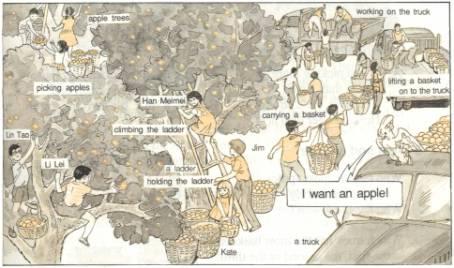
1.Word and phrases
shape, ring, collection, bank, material, hide, silver, penny (pi. pence), mine (n.) possibly, whenever, seashell, hand out, here and there, look round.
2.Useful expressions
1) …be of +n. =be + adj.
2) It is said that + subject clause
It is reported that…
It is believed that.
It is common to have the head of a famous person on one side.
3.Learn the history of coin.
Step 1 Revision
Revise the dialogue in SB L.21 by asking a pair of students to come to the front to act out the dialogue they themselves made.
T: First of all, I'll ask some of you to act out the dialogue you yourselves made after class.
A: Hello. Can I speak to …please?
B: This is … speaking.
A: Hello, …This is …. Excuse me for ringing you so late.
B: That’s OK.
A: I would like to ask you about some stamps. Do you still have …..stamp?
B: I’m afraid I don’t have it any more. I ……..
A: Oh! What a pity!
Step 2 Warm-up
1. Make up a dialogue between Ss and the teacher by asking these questions:
Do you like collecting things?
What do you collect?
How do you collect them?
2. Discussion: Put the Ss in groups of four to discuss these questions:
Which of the following do you collect: stamps, coin or postcards? Anything else?
3.Show the Ss some coins. Ask them who collect coin? How many coins have you collected? Tell the Ss something about coins.
T will tell them these coins are produced in 1999.
4. Talk about the picture on the top of page 32, using the following questions:
What can you see in the picture?
What are the shapes of these coins?
Say Today we're going to read a text about coins.
Step Listening and repeating
Play the tape of the passage for the Ss to listen and follow. Then ask them to do the following True or False Exercises.
1) The earliest coins in the world were used in China from more than 3000 years ago.
2) Coins may have the same designs on the two sides.
3) Before coins appeared, seashells, bamboo stick and wood were used for money.
4) The latest collection ever found in England was one of about 20000 silver pennies.
Step 3 reading
Get the Ss to read the passage carefully to know more information about coins. Then let them answer the following questions.
1) What were the earliest coins called?
2) When were the coins with holes in them used?
3) What is the coin usually pressed now? Was the date always included in the past?
4) What were the earliest coins in the west made of?
5) How many coins did the collection found in England in 1978 contain?
6) How did so many Chinese coins get to Australia?
Answers:
1) The earliest coin in China was called bei money.
2) These were used from 221BC until 1916.
3) Today the coin is usually pressed with name of the country, value of the coin and the ate. In the past the date was not always included.
4) The earliest coins in the west were made of gold mixed with silver.
5) It contained 54951 coins dating from the year 260 - 275AD.
6) It is known that thousands of Chinese worked in the gold mines in the late 19th century.
7) It is possible that one of them kept a kind of bank where the workers could keep their money safe.
8) Possibly this person died without anyone knowing where the coins were hidden.
Step 4 Language points
Write the useful expressions on the Bb. As usual, get the Ss to understand the following expressions.
1 ) with holes in it : The teacher comes in , with a book in his hand.
with + n. + 介词短语
In the cave I found a coin, with the design of a panda on its face.
with的复合结构,也可以作方式状语,用以修饰谓语动词。
2) Coins may be of different size…: Be of+ n..
Coins may be of different sizes的意思相当于Coins may be different in size.
3) be pressed with , be mixed with , be covered with….
4) in the late 1870s , in the early 1870s
5) It is …that + Subject Clause
It is known that…
It is possible that…
It is common to do …
Step5 Note making
Part 3.Page 33.Get the Ss to read the passage again and make notes. T check the Ss what information they have to put down.. Let the Ss work individually , then check the answers at the end of this activity.
Earliest coins: bei money from 650BC.
Information on the coin: name of country, value, and date.
Metals and other materials: gold, silver, seashells, wood and so on.
Designs: agricultural tools , head of a famous person, panda, and so on.
Step 6 Practice
Part 4, SB Page 33. This activity helps revise the - ing form as subject. Go through the example and the first two sentences orally and then let the Ss do this exercise alone. Check the answers with the whole class.
Answers:
1) Discovering so many Chinese coins in Australia is surprising.
2) Having the head of a famous figure on one side of the coin is rather common.
3) Getting used to the life in a foreign country needs time.
4) Handing out the listening text to the students seems necessary.
5) Reading without full understanding is no good.
6). Seeing her sad made me sad.
Step 7 Practice
1. SB Page 33, Part 5. Make sure that the Ss know the special use of the verbs in the exercise. Note that verbs like intend, continue, like, start are followed either by to do or the - ing. Write the following on the Bb: finish doing, allow doing, needs doing, advise doing, practice doing, suggest doing, can’t help doing, consider doing.
2. Let the Ss do it alone and check the answers with the whole class.
Answers:
1. rewriting 2. travelling/to travel 3. smoking 4. to buy/buying 5. washing
6. eating, taking 7. speaking 8. using 9. laughing 10. delivering 11. making/ to
make 12. smoking/to smoke
Step 8 Oral practise
Get the Ss to retell the whole passage according to the key words.
T: Now we have learnt about coins. We know the earliest coin, their sizes, weights and shapes. Let Ss retell the story according to the key words on the Bb.
Key words: the earliest coins, in China, different size, weights, shapes, …be made of different kinds of metal collections of coins that had been buried, tell a story.
Step 9 Workbook
Let the Ss to read the text once again. Then ask them to do WB Ex. 2 Page 99.
Step 10 Homework
Finish off the work exercises in WB.
探究活动
教师组织学生就有关hobbies话题进行讨论,把他们分成几个小组分别谈论,让他们彼此交谈自己目前的hobbies, 或者能够带给他人乐趣的事情,学生可选择如下的话题:
Why do collect the newspaper/magazine/stamp/bottle… ? , or what fun has been brought to yourself ?
 爱华网
爱华网